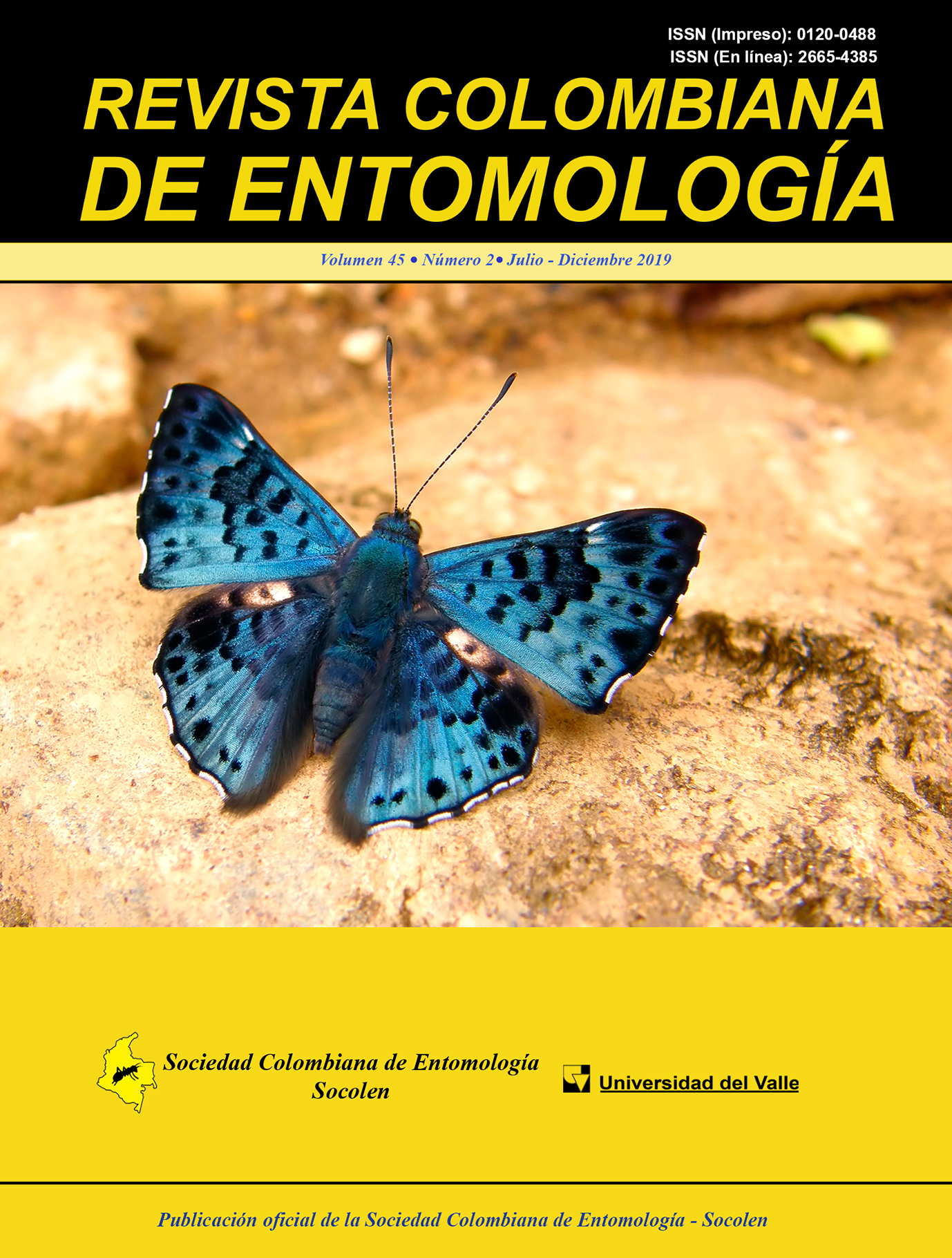Fungi associated with Hypothenemus hampei (Coleoptera: Curculionidae: Scolytinae) in Tabasco, Mexico
Main Article Content
In the state of Tabasco, Mexico, the coffee berry borer Hypothenemus hampei, was reported for the first time in 2004. Since then it has become the main insect pest of coffee in this area. The aim of the present study was to document the mycobiota associated to H. hampei adults in coffee plantations of three localities of Tabasco: Teapa, Tacotalpa and Huimanguillo. Coffee berries infested with the coffee berry borer were collected from the field and adults of H. hampei were extracted. The fungi that grew on the Scolytinae cadavers were isolated and identified using taxonomic keys. Two isolates of each morphological species were molecularly identified. A total of 74 isolates was obtained from the cuticle of H. hampei. Of them, 52 presented morphological affinity with Fusarium solani, five with F. oxysporum, five with F. verticillioides, one with Geotrichum candidum and 11 with Beauveria bassiana. The DNA sequences showed similarity with sequences found in GenBank, with homologies of 99 % and 100 %, which coincided with each morphological species. The most abundant species was F. solani (70.2 %), followed by B. bassiana (14.8 %). The species F. verticillioides and F. oxysporum represented each one, at 6.7 %, respectively. The least abundant was G. candidum (1.3 %). The findings of the species F. verticillioides and G. candidum are new reports of micromycetes fungi associated with H. hampei. This study contributes to the knowledge of the diversity of fungi associated with H. hampei.
- José del Carmen Gerónimo-Torres, Magdiel Torres-de-La-Cruz, Manuel Pérez-de-La Cruz, Aracely de-La-Cruz-Pérez, Carlos Fredy Ortiz-García, Silvia Cappello-García, Characterization of native isolates of Beauveria bassiana and its pathogenicity to Hypothenemus hampei, en Tabasco, Mexico , Revista Colombiana de Entomología: Vol. 42 No. 1 (2016)
- Eder Ramos-Hernández, Julia María Lesher-Gordillo, Carlos Fredy Ortiz-García, Carlos Oropeza-Salín, Saúl Sánchez-Soto, Miguel Ángel Magaña-Alejandro, María del S. Narváez-Cab, Cixiidae and Derbidae (Hemiptera) putative vectors of phytoplasma of group 16 SrIV , Revista Colombiana de Entomología: Vol. 46 No. 2 (2020)
Accepted 2021-08-24
Published 2019-07-15

This work is licensed under a Creative Commons Attribution-NonCommercial-ShareAlike 4.0 International License.
Authors retain the copyright on their work and are responsible for the ideas expressed in them. Once a manuscript is approved for publication, authors are asked for a publication license for the term of legal protection, for all territories that allows the use, dissemination and disclosure of the same.





